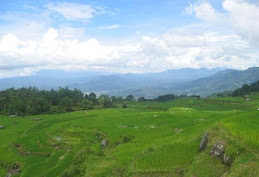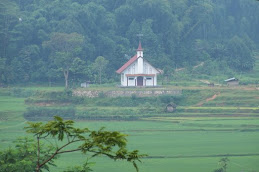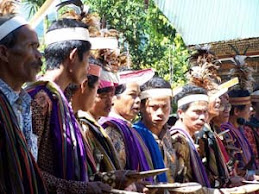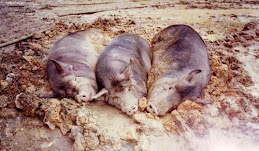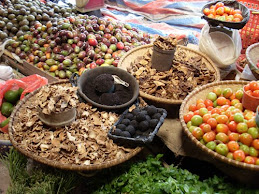 Tana Toraja is a small place in South Sulawesi, Indonesia that lies about 350 kilometers from Makassar the capital city of South Sulawesi.Why this place named Tana Toraja? The word “Toraja” originated from the lowlands, deriving from the Bugis words to “person” or “people” and ri-aja “from above” (Bigalke, 2005) which is mean “Land of People from Above” and some elders call it “The Land of the Kings”
Tana Toraja is a small place in South Sulawesi, Indonesia that lies about 350 kilometers from Makassar the capital city of South Sulawesi.Why this place named Tana Toraja? The word “Toraja” originated from the lowlands, deriving from the Bugis words to “person” or “people” and ri-aja “from above” (Bigalke, 2005) which is mean “Land of People from Above” and some elders call it “The Land of the Kings”Most of Toraja area are surrounded by mountains or we can say, it is on a highland. Since it is surrounded by mountains Tana Toraja can attracted you with it’s beautiful views from the top of the mountains or even on your way, not only that, the unique Culture can be entertaining everybody who ever been this place.
In the “aluk to dolo” people believe that all life in heaven is unsepareted from the ritual of “aluk/native belief” which formed in Funeral Ceremony (ritual of the west or rambu solo’) to Thanksgiving ceremonies (ritual of the east or rambu tuka’). The west and the east are according to the sun, west symbolizes death and east symolizes the birth. These beliefs which composite religious ritual and become the sources of norm, regulation, moral, etiquette, in whole life of Toraja people.
Especially for the Funeral ceremony there are some rituals or tradition to be held. The process begins from the preparation of tents, ma’palao (people carrying the death body from the house to the place where the funeral ceremony will be held, this occasion also as a sign of the funeral ceremony begin), mantarima tamu (part where the family of the death man receiving guests or relatives from other villages), mantunu (this is a part where pigs and buffalos are sacrifice), and at the end, is burial day in which the body is brought to liang (stone grave) or patane. During the procession there are some special dances and attraction (buffalos fighting) held in the funeral ceremony.
Special dance and music
Funeral ceremony/ Rambu Solo’ for examples:
Ma’badong dance -- done by men, perform in circle with magnificent song about man’s journey from birth to death.
Ma’katia dance – done by women, this dance use to welcome the guest or relatives from other villages.
Pa’randing dance – done by men, this dance performs to honor heroes of war. The dancers can be more than one.
Thanksgiving ceremonies / Rambu Tuka’, for examples:
Pa’gellu’ dance – mostly done by girls or children in traditional dress, this dance usually perform to celebrate harvest, tongkonan housewarming, or wedding.
Manimbong dance – done by men and representing thankful to God for the harvest, or a new tongkonan house (family house). Check this one to find out manimbong song: http://batusura.de/chants/13.htm
Traditional music:
Bamboo music --> consist of 15 to 30 player
Ma’pelle’ --> made from rice stem, the player can be more than one (mostly ma’pelle’ done at Thanksgiving ceremonies or rambu tuka’)
There are a lot more about Toraja dances and music, some are only use in Funeral ceremony and some are only for the Thanksgiving ceremonies.
Even Tana Toraja have some rituals in ceremonies it doesn’t mean they don’t have religion. Sometimes people don’t really know that majority of Toraja people are Christian brought by Dutch.
PS. Daily temperature in Toraja is 25 to 27o C, while at night temperatures around 20 to 22o C.


